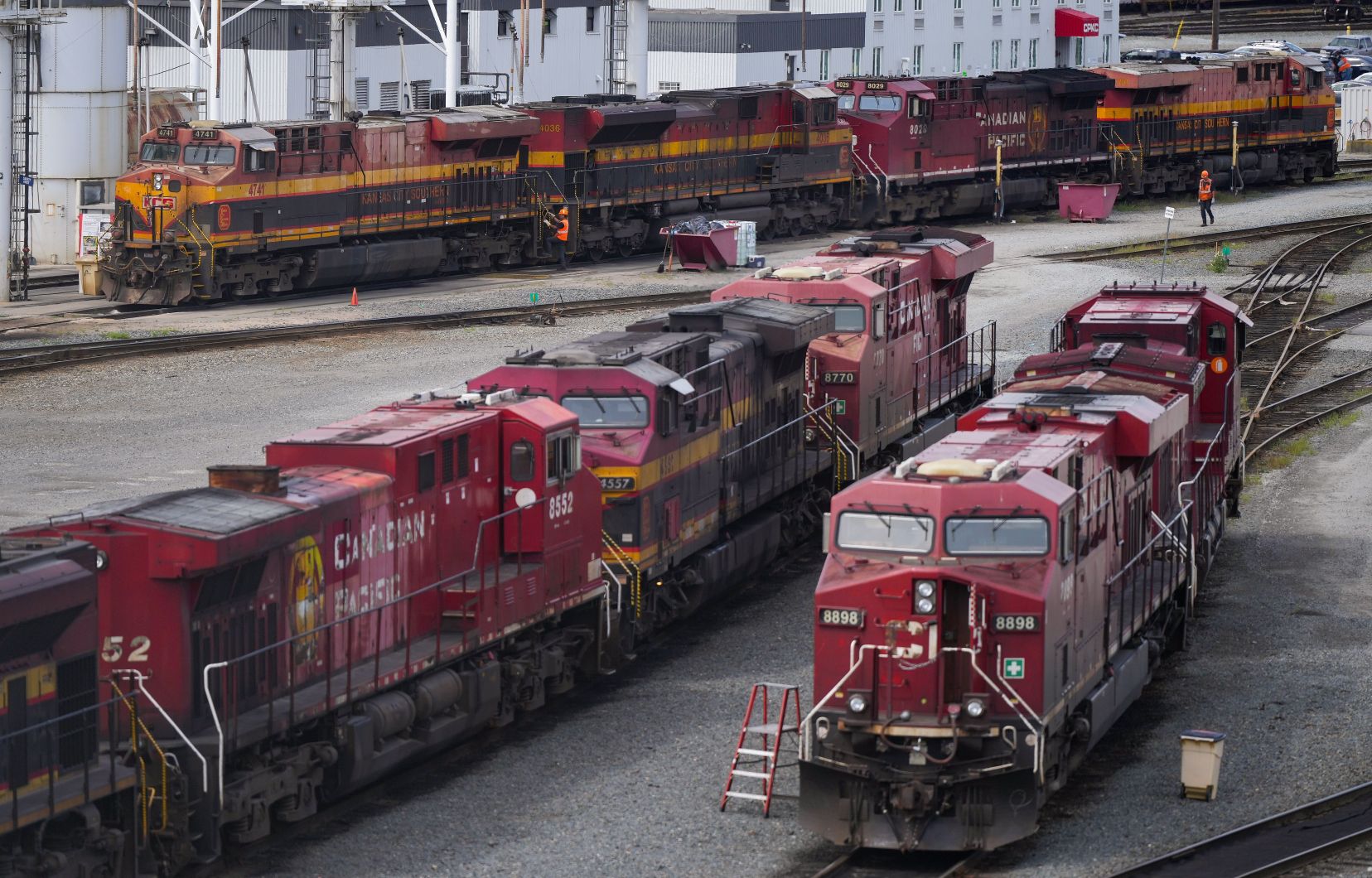“Unprecedented” and affecting “a huge spectrum of products,” the lockout declared Thursday by the Canadian National Railway Company (CN) and Canadian Pacific Kansas City (CPKC) could affect the entire supply chain in the country, and even in the United States. Rail, as Professor Yan Cimon calls it, “moves a lot of things” and its paralysis greatly worries the economic community. The Duty takes stock of the economic consequences.
- CN and CPKC are Canada’s two largest rail carriers, and the goods they move account for up to 75% of all traffic, according to rating agency Moody’s.
- In a memo sent Wednesday, it estimates the economic losses at $341 million per day. The industries most affected will be: pulp and paper, wood, agriculture, automobiles, metal products manufacturing and quarrying products.
- The Canadian Railway Association estimates that the goods transported by these two companies daily amount to $1 billion. The annual balance sheet for all the players is $380 billion, according to the association.
- Several economic players have made their concerns known in the public arena. The Conseil du patronat du Québec (CPQ) has notably urged Ottawa to act in this labour dispute, because “Canada’s economic health and the country’s reputation with its trading partners are at stake,” said Karl Blackburn, President and CEO.
- Between 30 and 50% of Canada’s exports are made by train, estimates Yan Cimon, professor of strategy at the Faculty of Administrative Sciences at Laval University.
The train, everywhere
The train is the “most invisible means of transport that has such a place in our lives,” states Mr. Cimon from the outset. The products transported on the rails are very diverse: some are very visible, such as entire automobiles or their parts. Others are critical at the beginning of a chain that cannot experience too many upheavals: fertilizers for the agricultural sector, for example. Grain, wheat, canola and potash also mainly travel by train. Animal producers are therefore “nervous” about feeding their livestock.
Mr. Cimon also gives the example of plastic granules that are used in manufacturing processes that are a little less well-known to ordinary people. If the labour dispute lasts one or two days, consumers may still not notice it. Beyond that, “it is possible that we will start not finding our favourite products on the shelves,” he says.
The fact that the two largest carriers are paralyzed at the same time is “unprecedented,” believes this logistics specialist. The repercussions will be felt throughout North America, including Mexico.
Benefits
It’s also that the train has advantages that are very difficult to match, Mr. Cimon emphasizes. “Trucking is a solution, but it can’t work for everything”: rail transport is much cheaper over long distances, it is practical and it is environmentally friendly.
There is a “clear cost advantage for companies,” the professor describes, but also an impossibility of diverting all these goods to trucks. “Imagine that you are in front of a level crossing and you see a train passing,” he invites. For each of these wagons, it would take a truck and a driver. And if the distances are great, more than one driver.”
Rail transport has not decreased in recent years, on the contrary: “Rail is limited by its own capacity at the moment, because the demand is there. […] He has made himself indispensable.” Technological advances have greatly accelerated deliveries, which has made him all the more attractive.
